The constellation of Orion is perhaps one of the most notable constellations that we can see in the night sky. We can easily see the celestial hunter because of the noticeable row of three stars in the center of this constellation. These three stars are called the Orion’s Belt asterism. By looking at the picture below, we can understand why it was given such a name. It is because it completes the bearing and clothing of the celestial hunter!
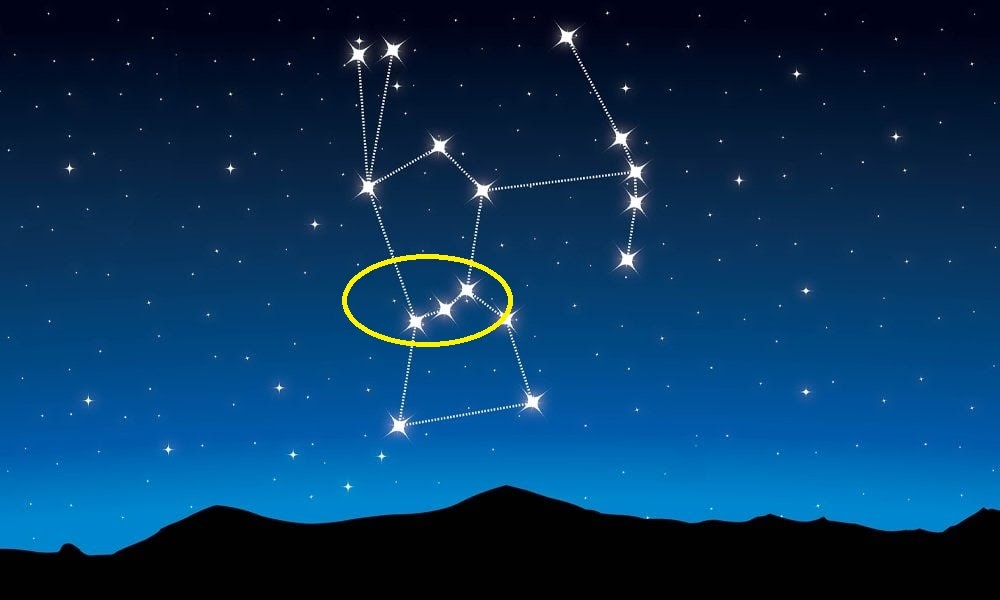
Orion’s Belt is a simple asterism. It is made up of three bright stars. Their distance to one another is another factor that makes them stand out among other stars.
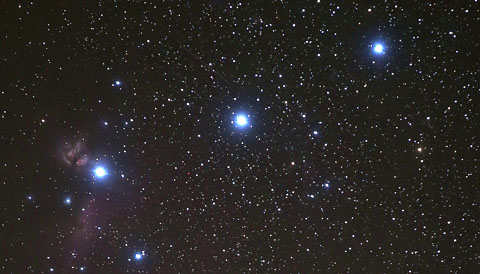
Orion’s Belt is one of the things in the night sky that has a lot of influence in so many cultures and traditions across the world. The names “Three Kings” and the “Three Marys” are just a few of the many labels for which it has become known to people.
When Can We See Orion’s Belt?
We cannot see the asterism of Orion’s Belt all year round because it is a part of the seasonal constellation of Orion the Hunter. We can see it during the winter months in the northern latitudes, from about November to February. During that time, the season in the Southern Hemisphere is summer. Observers from the south of the equator can see Orion’s Belt during summer months. From anywhere on Earth, the best time to see the Celestial Hunter’s Belt is at 9 pm during the first month of the year, in January.
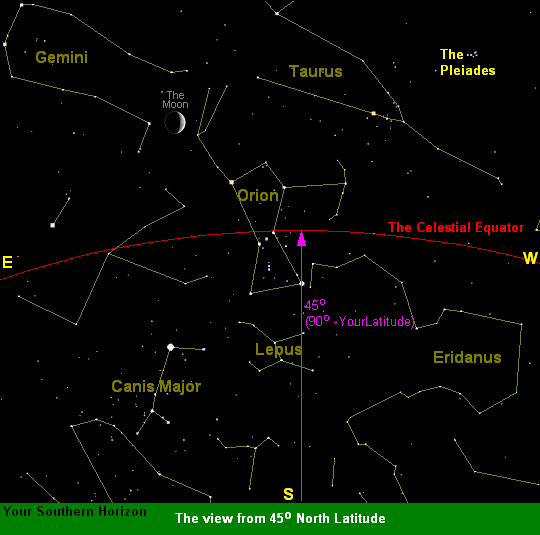
Where Can We See Orion’s Belt?
Orion’s Belt lies on the celestial equator. We can easily see this asterism because it is a part of the big and famous constellation of Orion. Even if we cannot make out the entire hour-glass form of Orion the Hunter, the row of stars forming the belt is very noticeable. From here on Earth, they look like they are in perfect distance from each other. Plus, these bluish stars are bright so they are hard to miss in the night sky!
We can see it in the southwestern sky from the Northern Hemisphere. Viewers from the Southern Hemisphere can spot it in the northwestern sky.
The Stars of Orion’s Belt
Orion’s Belt is made up of three bright stars forming a straight line. It is believed that about ten million years ago, the belt stars were formed at around the same time. These bright stars were formed because of the molecular clouds in the Orion constellation. And what is amazing is that we can see all three in the naked eye!
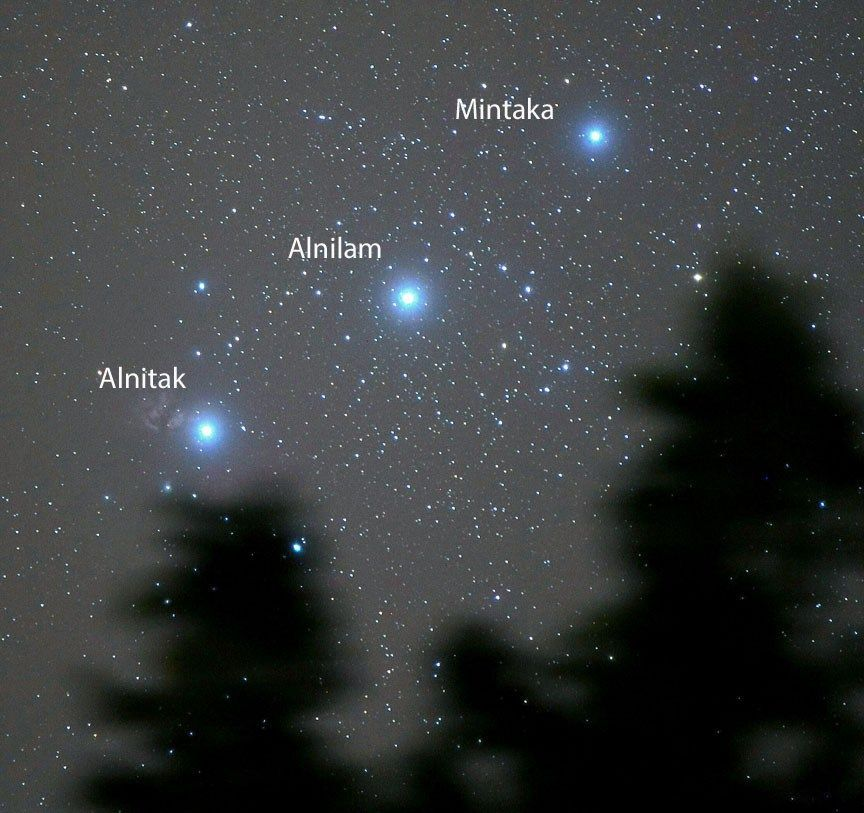
These stars have unique names: Mintaka, Alnilam, and Alnitak. Let us get to know them.
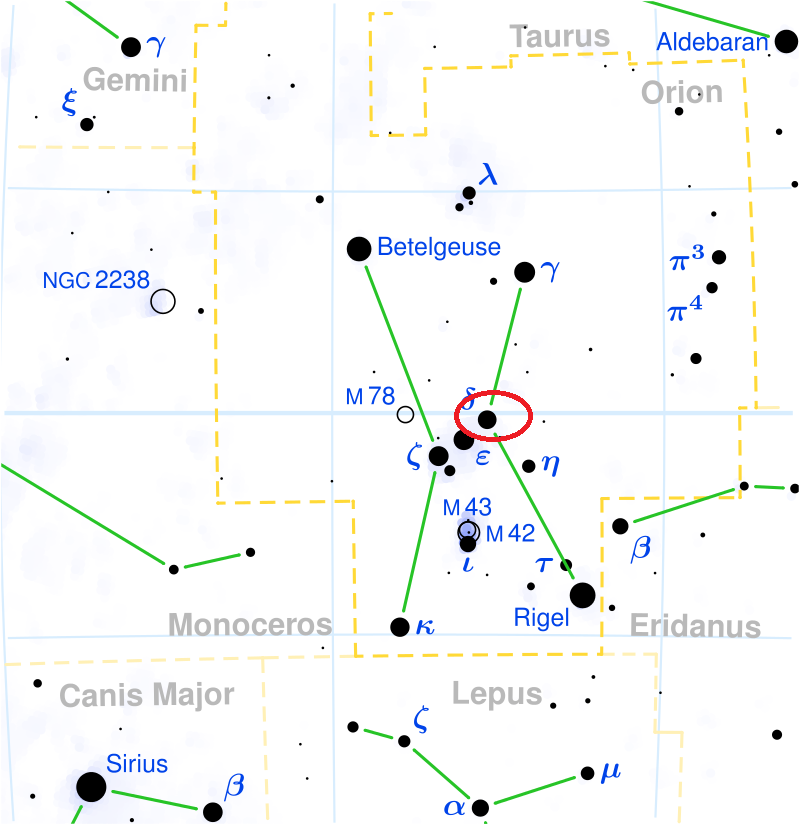
Mintaka (δ Orionis)
Mintaka is also called Delta Orionis in the Bayer designation. Its other names are Delta Ori (δ Ori) and 34 Orionis (34 Ori) in the Flamsteed designation. The official name of this star sounds unique because it has its origin in the Arabic language. Mintaka is from the word “manṭaqa” which is Arabic for “belt.”
Mintaka is the westernmost star forming the belt of Orion. It is 1,200 light-years away from the Sun. The combined apparent magnitude of its components is 2.23. This star is actually the nearest in the celestial equator among the three.
Delta Orionis is an interesting multiple star system because it has three components but contains at least six stars in total. Let us get to each component.
-
Delta Orionis A ( δ Orionis A)
Delta Ori A is a triple star system. Two of these stars orbit each other and the third component orbits the pair. It only takes 5.7 days for the first two stars to orbit around one another because they are close. They are an eclipsing binary. Since these stars orbit each other, there will be times when one passes in front of the other and covers it from our line of sight here on Earth.
The bigger star in the binary gave astronomers a chance to study how the stellar winds from massive stars affect them and their surroundings. While it only takes days for the close binary to orbit each other, the third star in Delta Ori A takes more than 400 years to orbit the pair!
To better understand the triple star system of Delta Ori A, below is an artist’s illustration of it from NASA:
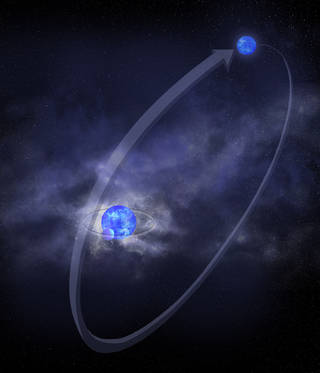
-
Delta Orionis B ( δ Orionis B)
Delta Ori B is a single star that we cannot see in the naked eye. It has an apparent magnitude of 14 so it is very faint from our vantage point here on Earth. Other designations for it are UCAC3 180-24383 and CCDM J05320-0018B.
-
Delta Orionis C ( δ Orionis C)
Delta Orionis C or Delta Ori C is also called HD 36485. It has an apparent magnitude of 6.85. This main sequence B-type star was believed to be a single star but later discovered that it is a spectroscopic binary, a dim A-type companion.
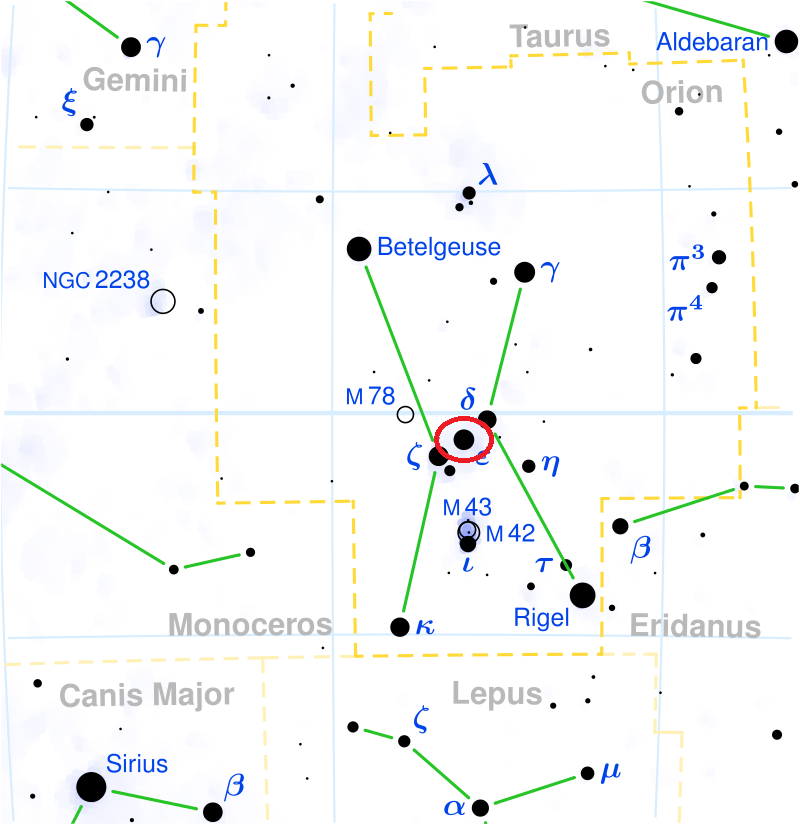
Alnilam (ε Orionis)
Alnilam is also known as Epsilon Orionis. It is abbreviated as Epsilon Ori and 46 Ori. This blue supergiant star is located in the middle of Orion’s belt asterism. Overall, it is the 29th brightest star in the night sky and the 4th brightest in the Orion constellation. It is considered to be slightly variable, so its magnitude changes from time to time between 1.64 to 1.74. It is the brightest star in Orion’s Belt.
Epsilon Ori is about 2,000 light-years away from us. It is very massive, roughly 275,000 to 832,000 more luminous than the Sun. The light from Alnilam is reflected in the molecular cloud of NGC 1990, making it a reflection nebula. The name of this star came from al-niẓām, which means “arrangement or string of pearls”. Even though Alnilam is the name of the star in the middle of Orion’s belt, the name is like a description of the three stars looking like an elegant row of pearls in the night sky!
Alnilam is an important star in navigational astronomy. There are about 6,000 in the night sky that are visible to the naked eye but only 58 are selected. Alnilam is one of them.
These stars are selected because of their position in the celestial sphere and brightness among other things. Other notable stars on the list are Sirius, the brightest star, and the North Star of our time, Polaris.
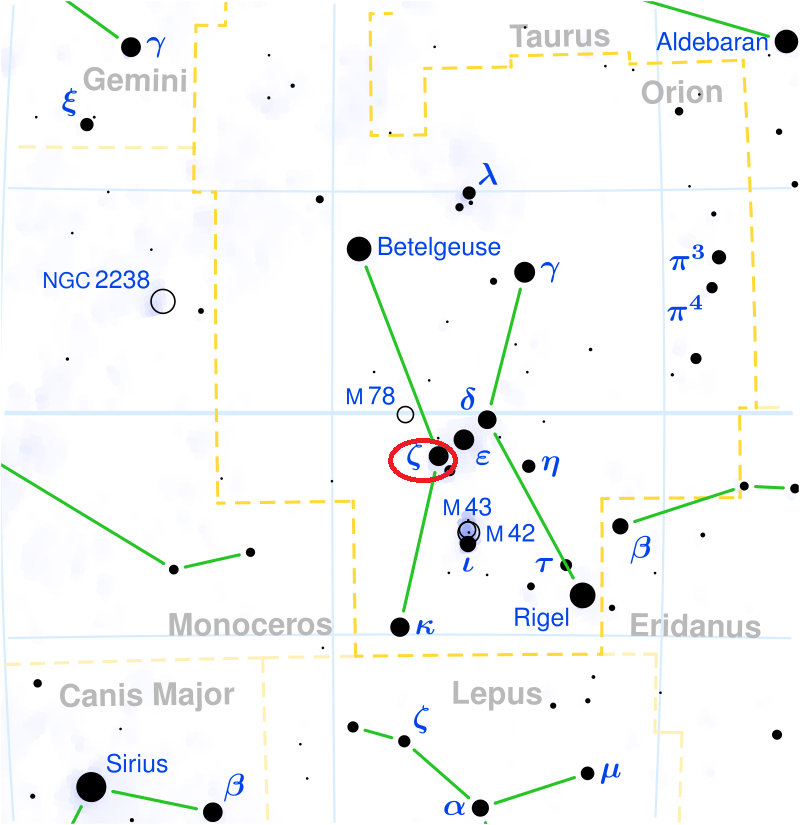
Alnitak (ζ Orionis)
Alnitak is called Zeta Orionis in the Bayer designation and 50 Orionis in the Flamsteed designation. It has a distance of about 1,260 light-years away from our planet. It is the 5th brightest star in the constellation Orion.
Alnitak is a triple star system that is located in the easternmost part of Orion’s Belt. The combined apparent magnitude of its components is 1.77. The origin of its formal name is from an-niṭāq which means “the girdle” or the belt of Orion the Hunter. Interestingly, the system of Alnitak is surrounded by a bright nebula called IC 434 which is a part of the Horsehead Nebula.
-
Alnitak A
Alnitak A is a close binary. It is made up of stars Alnitak Aa and Alnitak Ab.
-
- Alnitak Aa
Alnitak Aa is a star we can see in the night sky. It is the primary star in the triple star system of Zeta Orionis. This blue supergiant has an apparent magnitude of 2.0. It is considered the brightest star in the class O classification. If we compare it to our Sun, Alnitak Aa is 33 times more massive than it. And regarding the size, the diameter of this blue star is 20 times as big as the Sun and 21,000 times brighter!
-
- Alnitak Ab
Alnitak Ab is a blue dwarf B-type star having an apparent magnitude of 4.3. It lies close to the primary star, Alnitak Aa, just about 11 astronomical units away.
-
Alnitak B
Alnitak B is a 4th magnitude star in the B-class. It completes its orbit around Alnitak A after 1500 years.
Orion’s Belt as a Celestial Locator
We can see a lot of celestial objects in the sky, not just stars but also star clusters, planets, nebulae, and many others. Because there are just too many of them, it is hard to know which is which. With stars alone, astronomers have said that there are even more of them than all the sand on Earth combined. Imagine combining all the sand of our beaches and deserts. That is how many stars there are, but ten times more!
We can use the easy-to-spot asterism of Orion’s Belt to identify other celestial objects that we can see in the night sky, may it be a star or not. After recognizing one thing, identifying other things close to it becomes easier. We begin to understand the connection of the celestial objects by following some of the most prominent features in the sky like Orion’s Belt. And by doing so, we can easily see why this is one of the most prominent asterisms in the sky.
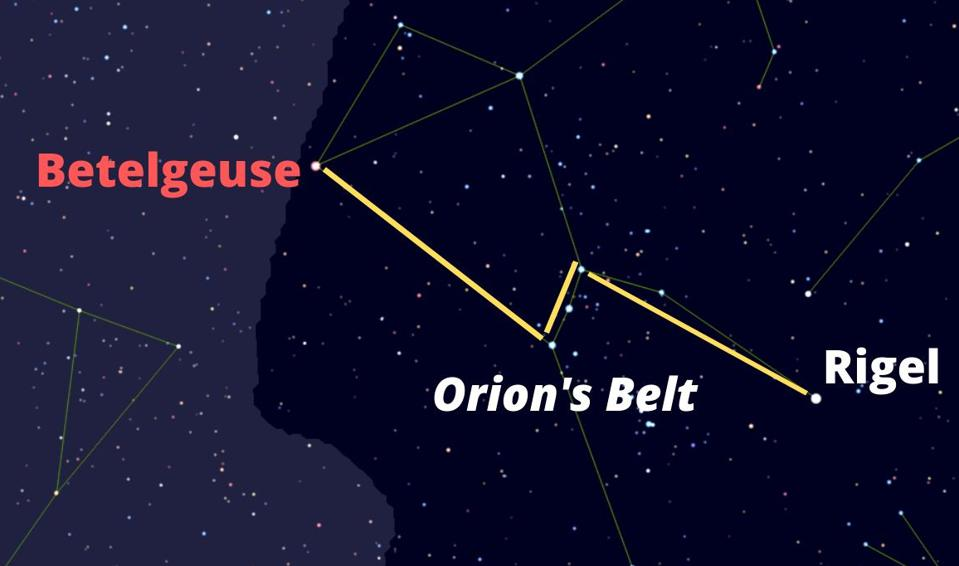
To Betelgeuse and Rigel
Betelgeuse and Rigel are two of the brightest stars in the constellation Orion. We can easily identify them using Orion’s Belt. Betelgeuse is the bright star left of Orion’s Belt, and Rigel is on the right. By identifying these two bright stars, we can also spot other important ones in the constellation of Orion. Bellatrix is the star opposite Betelgeuse and the one opposite Rigel is Saiph.
To the Orion Nebula
This is the Orion Nebula:
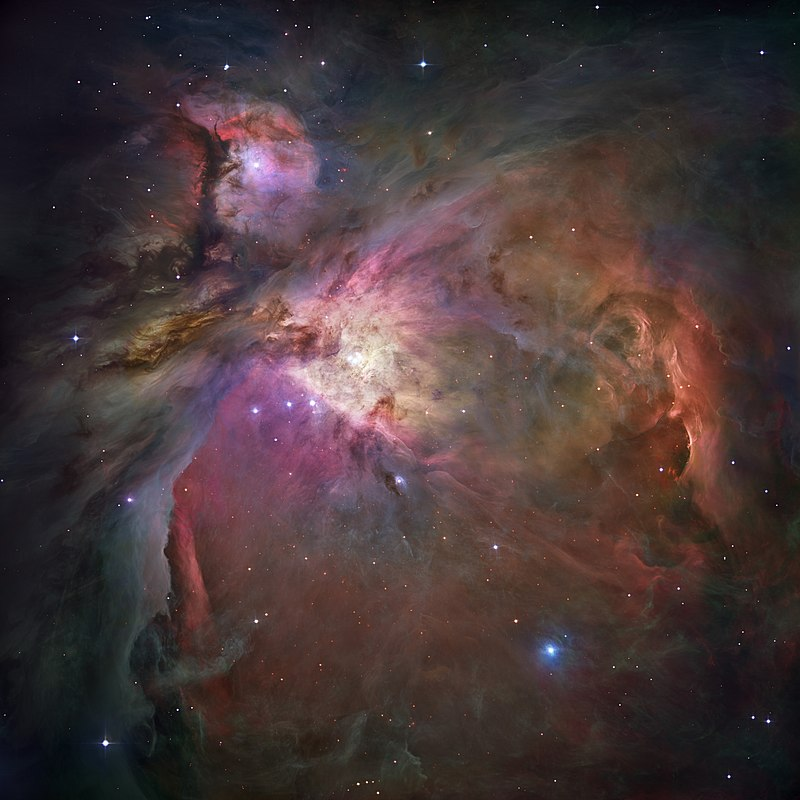
We can locate the Orion Nebula or Messier 42 after finding Orion’s Belt. To spot it, we need to look below the belt stars. Under it are three dimmer stars that are part of another group called Orion’s sword. We can find the Orion Nebula in the middle of this sword. It stands out among the sword stars because of its reddish hue.
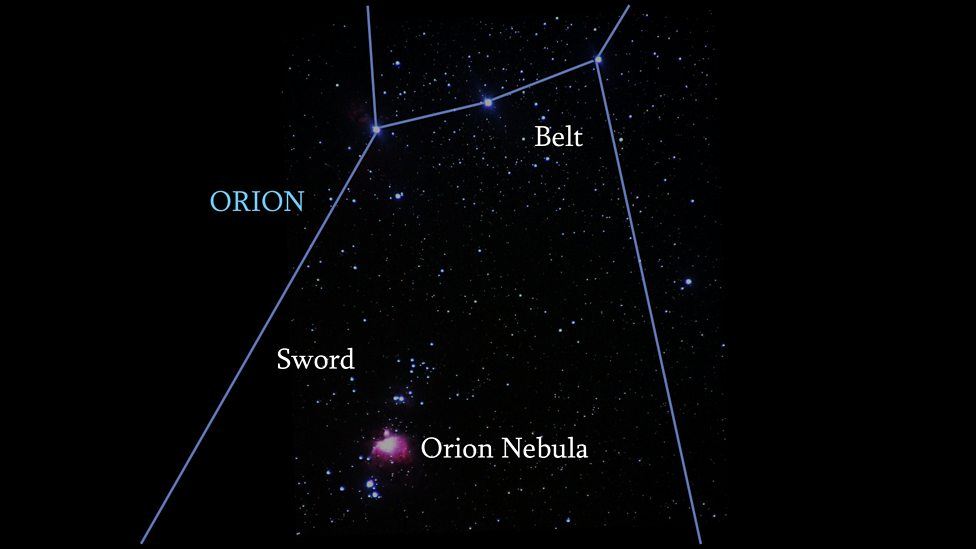
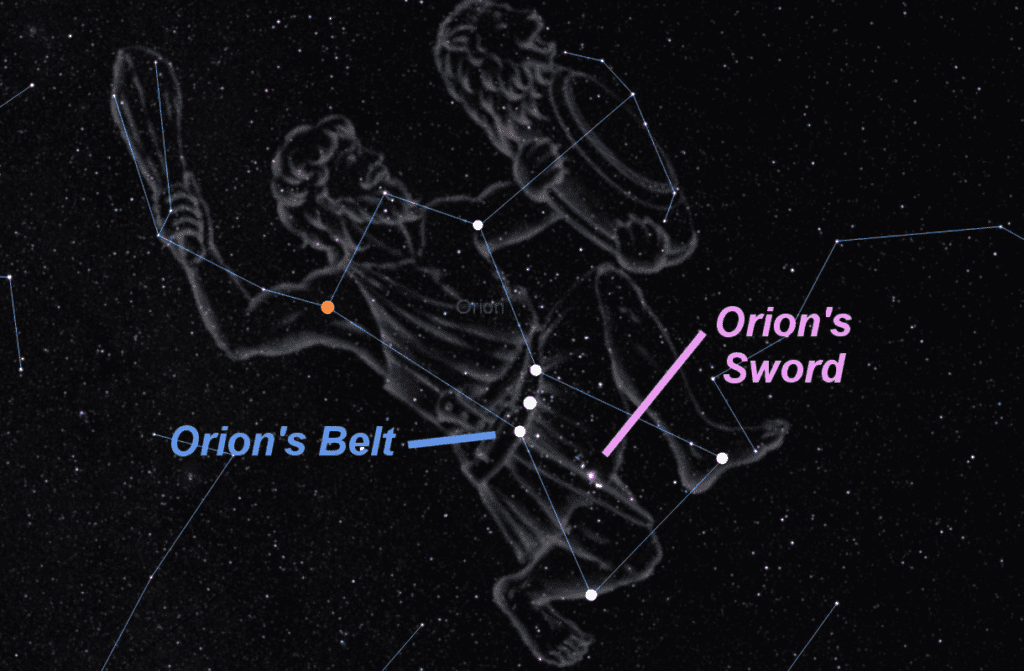
To Sirius
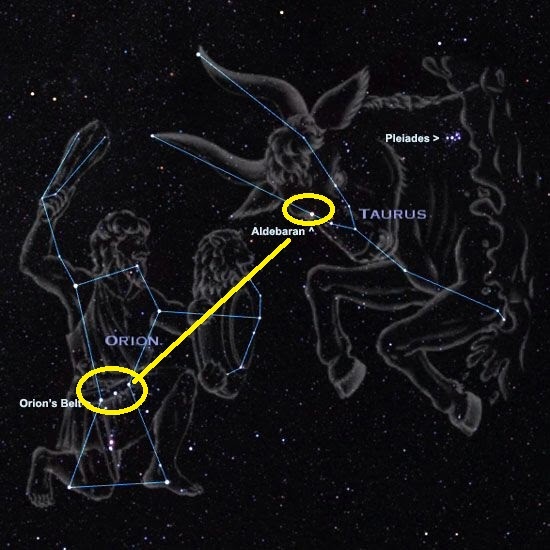
Sirius is a famous star because it is the brightest in the night sky. Some people call it the Dog Star because it is in the constellation of Canis Major. We can find Sirius using the Orion’s Belt asterism by connecting the three stars. If we are going to extend the line of the belt in the side of Alnitak, the line points us to Sirius.
To Aldebaran
Aldebaran the brightest star in the constellation of Taurus the Bull. We can find this red star if we draw a line connecting Orion’s Belt and extending it to the side of Mintaka. The same line points to Sirius on the other end.
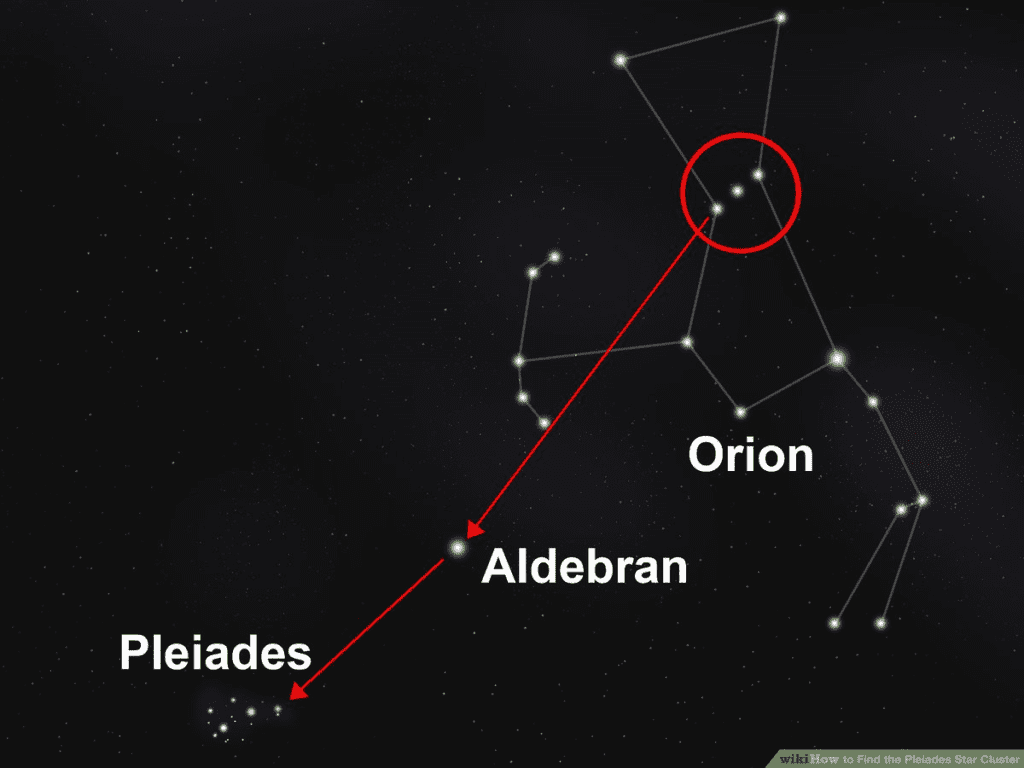
To the Pleiades
The Pleiades is an open cluster star in the Taurus constellation. It is a close celestial object to our planet so we can see it in the night sky. We can find it by continuing the line from Mintaka pointing to Aldebaran. Extend the line past Aldebaran and then we will find the Pleiades. We can still find it even if the celestial hunter is upside down!
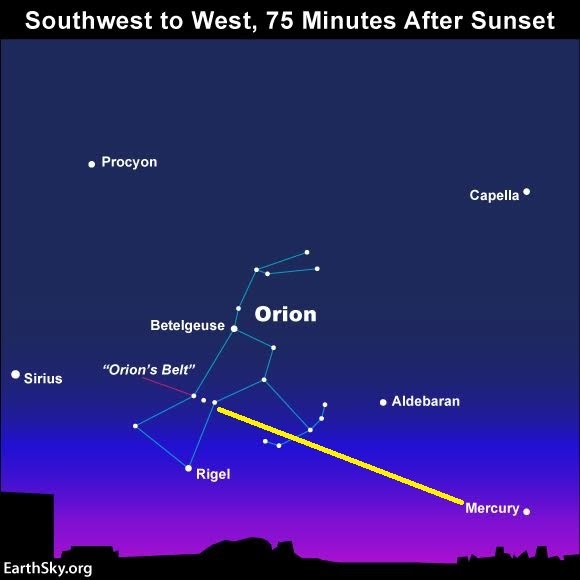
To Mercury
Orion’s Belt does not only point to stars but also to a planet. In April, Orion is starting to dip in the horizon after its season. We can still see some parts of it, including the three stars forming its belt. If we extend the line forming Orion’s Belt, it does not exactly point to Aldebaran anymore, but to Mercury.
Mercury appears low around sunset. This planet is hard to catch because it can only be seen around that time and usually stays near the horizon. There might be some confusion as to whether the Orion’s Belt is pointing to Aldebaran or Mercury. If that happens, we can remember that Mercury is closer to the horizon and is brighter than Aldebaran.
Names Related to Orion’s Belt
Since Orion’s Belt is in the celestial equator, the three stars are easily seen from both the Northern and Southern Hemispheres. Different cultures from around the world have their names for the stars. Let us get to know some of them and the stories behind those given names.
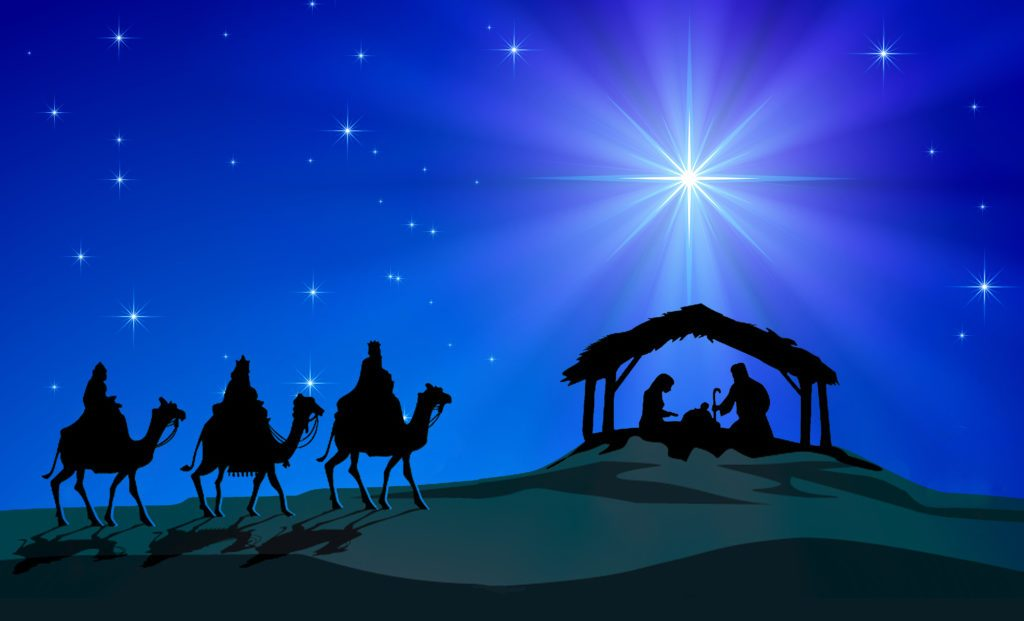
The Three Kings
The story of the Three Kings is perhaps the most famous one related to the three stars of Orion’s Belt. But in the story itself in the Bible, it was not mentioned that they were kings. Instead, they were described as “wise men from the East.” Because of that, Orion’s Belt is also called the Three Wise Men. These men followed a certain star in the story. In the past, people who know a lot about astrology and the sky were considered men of importance. They were asked for advice, and are believed to know magic. The three men in the Christmas story were also called the Magi because of their great knowledge in following the star that led them to Jesus.
Three wise men named Gaspar, Melchior, and Balthazar were on a journey to find baby Jesus. They saw a new star rising and followed it to pay homage to the child. They went to Jerusalem and asked about the child “who has been born king of the Jews.”
The Prophetic King
When King Herod heard about this, he became worried that someone will become a new king. He called the chief priests and scribes of his kingdom and asked them about the newborn king. The priests said that the baby is in Bethlehem of Judea, as it was in the prophecy. Upon knowing about this, King Herod called the three Wise Men and asked about the star that they were following. He told them what the priests had found out. He told the wise men to bring him the word when they have found the child so that he can also pay homage to the new king.
The three wise men continued on their journey and followed the rising star. When it had stopped, they were joyful because they had found the baby and his mother Mary. They offered their gifts to him. Gaspar, the King of Sheba, gave the present of Frankincense. The King of Arabia, Melchior, brought gold. Balthazar, the King of Tarse and Egypt, presented myrrh to baby Jesus.
The Prophetic Dream
The three wise men did not return to King Herod after the visit to Jesus. A dream had told them of the king’s bad intention to the child. He was afraid that the new king foretold by the prophecy would rule the kingdom and take his power! The wise men headed for their home country by following a different pathway from the kingdom of King Herod.
The story of the Magi related to Orion’s Belt has influenced traditional celebrations across cultures and religions. There is a holiday called the Feast of the Epiphany, commonly called Three Kings Day, to celebrate the arrival of the Magi to where Jesus was. It is celebrated 12 days after Christmas. It is called El Día De Los Reyes in Spain and the countries in Latin America.
The Star of Bethlehem
The story of the Three Wise Men is an important part of the Christmas celebration among Christians. So, it is just understandable that a story as old as this is related to one of the most recognizable and universally known asterisms like Orion’s Belt. In the story, the wise men followed the Star of Bethlehem. But if we are going to check our knowledge in astronomy, the movement of the stars is not visible to us because of their distance. In human time, we can only see the stars as fixed objects in the sky.
So what was the bright object that the Three Wise Men followed? Astronomers have three theories on what it might be.
-
A Conjunction Between Jupiter and Saturn
A conjunction happens when two or more planets line up or come close together. Because of this, we can only see one bright object in the sky. This conjunction only happens about every 800 years. The latest of the great conjunction between Jupiter and Saturn is on December 21, 2020.
-
A Bright Comet
Astronomers believe that the Star of Bethlehem could also be a very bright comet. And when it came close to the Sun, the ice melted so the tail was seen pointing away from the Sun.
-
A Nova or Supernova
A nova is a new star that can appear very bright in the night sky. Korean and Chinese astronomers have a record of a nova that appeared around 5 BC. Though the time frame fit around the time of the visit of the Three Wise Men, experts from other places did not note the appearance, so it was not that bright.
The Three Marys
Orion’s Belt is also called the Three Marys. They are mentioned in the Christian story of Jesus when he was crucified and resurrected. The name “Mary” was a common Jewish name at the time, so the names might be confused with one another.

Three Marys at the crucifixion were Jesus’ mother Mary, Mary Magdalene, and Mary Cleofas.

During resurrection, the Marys at the tomb were Mary Magdalene, Mary Cleofas, and Mary Salome.
There is a celebration for the Three Marys in France and Italy. The famous three Marys of Orion’s Belt are also called Las Tres Marías in South America and Spain. The images of these three Marys are carried in celebration of the resurrection of Jesus held on Good Friday.
Other Names Related to Orion’s Belt
Since Orion’s Belt asterism has been a major fixture in the night sky even in the past, people from around the world have given it different names and related it to their mythology and culture.
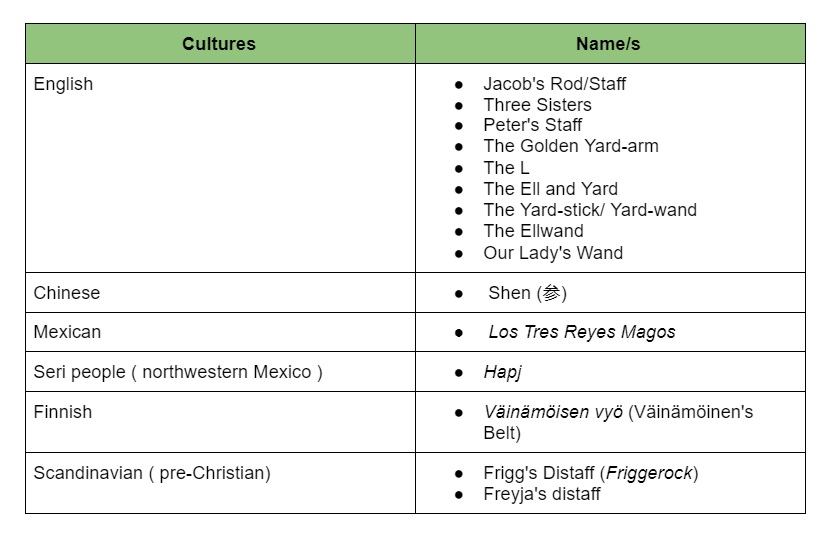
Interesting Structures Related to Orion’s Belt
Many structures on Earth are still a big mystery to us. Others believe that these ancient buildings were constructed in positions related to celestial objects. Many such structures are related to Orion’s Belt and the alignment and similarities are just uncanny!
The Pyramids
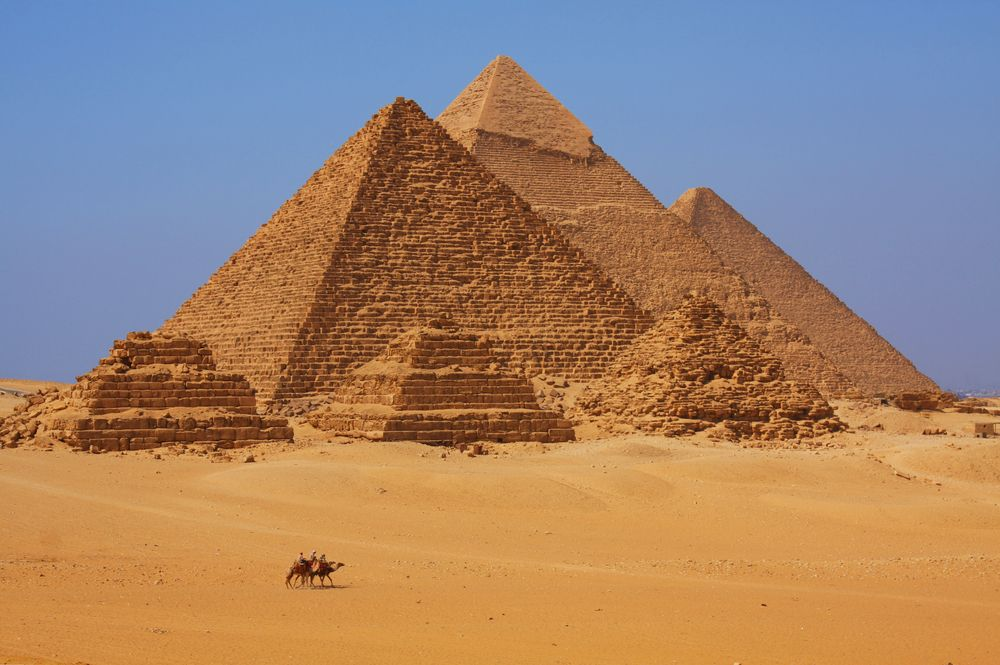
One of the most fascinating mysteries related to Orion’s Belt is the Pyramids of Giza. This idea was popularized by Robert Bauval in the Orion Correlation Theory. In this theory, it was stated that the formation of the three Egyptian pyramids (Menkaure, Khafre, Khufu) is based on the position of the belt stars.

The Pyramids are not the only structures related to the sky in Egypt. It is said that the position of Orion the Hunter in the Milky Way matches the position of the pyramids to the Nile River. The Great Sphinx was also related to the Leo constellation. It is like the ancient structures on Earth serve as a terrestrial map of the sky!
So how does the position of Orion’s Belt correlate with the pyramids of the Giza plateau?
Robert Bauval has noticed that the least bright star in the western side of Orion’s Belt, Mintaka, is slightly out of line from the two. Just like the smallest pyramid Menkaure. To prove his theory, Bauval used modern astronomical computer programs to see the position of the sky in Giza. He tried to look into the position of the sky in the supposed time when the Pyramids were being built, in 2500BC. But there was no alignment. That is because that time is the Age of Taurus. He dialed to the time in the Age of Leo, basing to the structure of the Sphinx, and found the exact alignment in 10500BC.
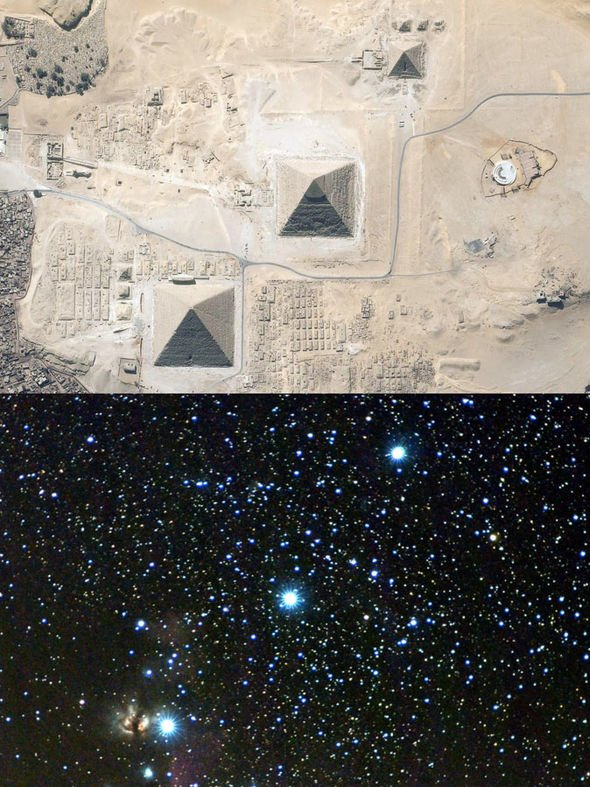
In 10500BC, the Sphinx, the Nile, and the pyramids aligned with the sky. But that is not the only thing. The size and position of the pyramids matched the apparent magnitude of the stars in Orion’s Belt!
The pyramids in Giza are not the only ones that seem to have the same position as the stars in Orion’s Belt. Pyramids from China and Mexico also line up in the same manner, with the smallest one slightly out of line.
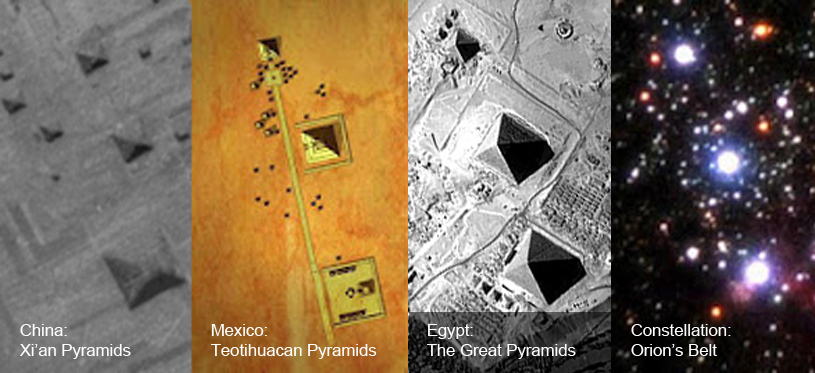
Three Hopi Mesas
A native American tribe called the Hopi has an interesting village structure. Many have related their landscape to the Orion constellation, particularly to Orion’s Belt.
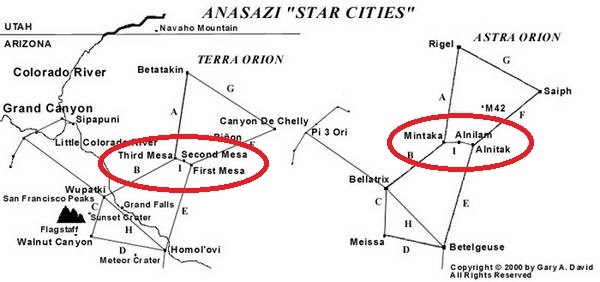
The Hopi frequently move from place to place but they have chosen to settle down in northeastern Arizona. It is said that they chose the high location of the mesas so that they can contact the gods. According to legends, the ancestors of the Hopi were guided by the stars.
In the center of the settlement, the Three Hopi Mesas can be found. The Third Mesa is in the West, just like the star Mintaka in Orion’s Belt. This Mesa is considered the oldest community that is continuously inhabited in North America.
The Second Mesa is related to the middle star Alnilam. In the Eastern part of the Hopi reservation is the First Mesa which correlates to the eastern star of the belt, Alnitak.